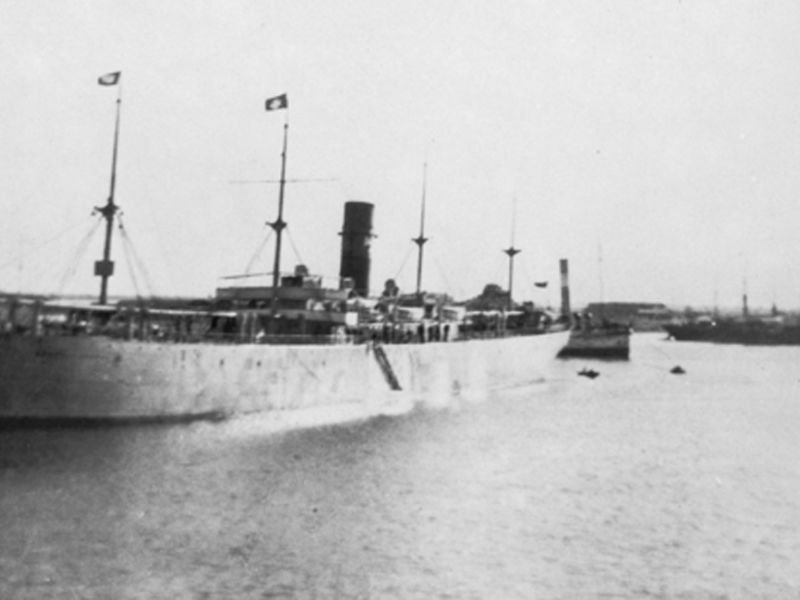Death at Sea on the Voyage Home
SS Drayton Grange, a British merchant vessel, was chartered to carry 1,500 troops to Australia at the end of the Boer War. However, Admiralty Transport authorities in Cape Town received permission for 41 officers and 2,002 NCOs and men to embark and the ship departed Durban on the 11th of July 1902.
Estimates of the number of those aboard vary, but overcrowding was considerable. The men were not highly trained troops being rushed to the front, but instead were from different states, different corps, mostly non- professional soldiers and unused to cramped conditions. Most had seen little fighting and were bored and desperate to return home. As well, fresh from patrolling the concentration camps that held Boer women and children, many brought measles, influenza, chest infections, tonsillitis, dysentery and enteric fever with them.
There was no isolation hospital and no disinfecting apparatus, and as more men fell ill, hospital beds took up space encroaching on healthy troops' quarters. The overcrowding and unsanitary conditions, compounded by bad weather and inadequate medical facilities, caused disease to spread rapidly.
Scuppers and shower-baths were used as urinals and constantly overflowed when the ship rolled. Latrines proved insufficient for gastric conditions and despite plenty of water, showers were in the open in often freezing conditions, so most preferred not to wash. Sick parades were held twice daily, with up to 150 men standing on an iron deck, their feet wet from the urinals.
The Officer Commanding, Lieutenant Colonel Lyster, asked to land sick troops upon arrival at Albany but W.A. authorities claimed a lack of medical and nursing attendants. No absolute refusal was given but the response was taken as such. Sick troops were later landed in Port Phillip Bay, Victoria under greater difficulties. The ship docked in Melbourne on the 7th of 1902, by which time five men were dead and another twelve died in ensuing weeks. Most deaths were from bronchial pneumonia or measles.
By the time the ship steamed into Sydney Harbour on the 10th of August 1902, carrying 782 troops, the loss of life had outraged the public and the new Commonwealth Government was forced to enact the Royal Commissions Act and a Royal Commission was established.
Sources:
Vashti Farrer The Australian Boer War Memorial, January 2011: https://www.bwm.org.au/drayton_grange.php
SBS News service: https://www.sbs.com.au/news/first-rc-looked-into-boer-war-hellship
AWM website

 Henry C Moulds
Henry C Moulds